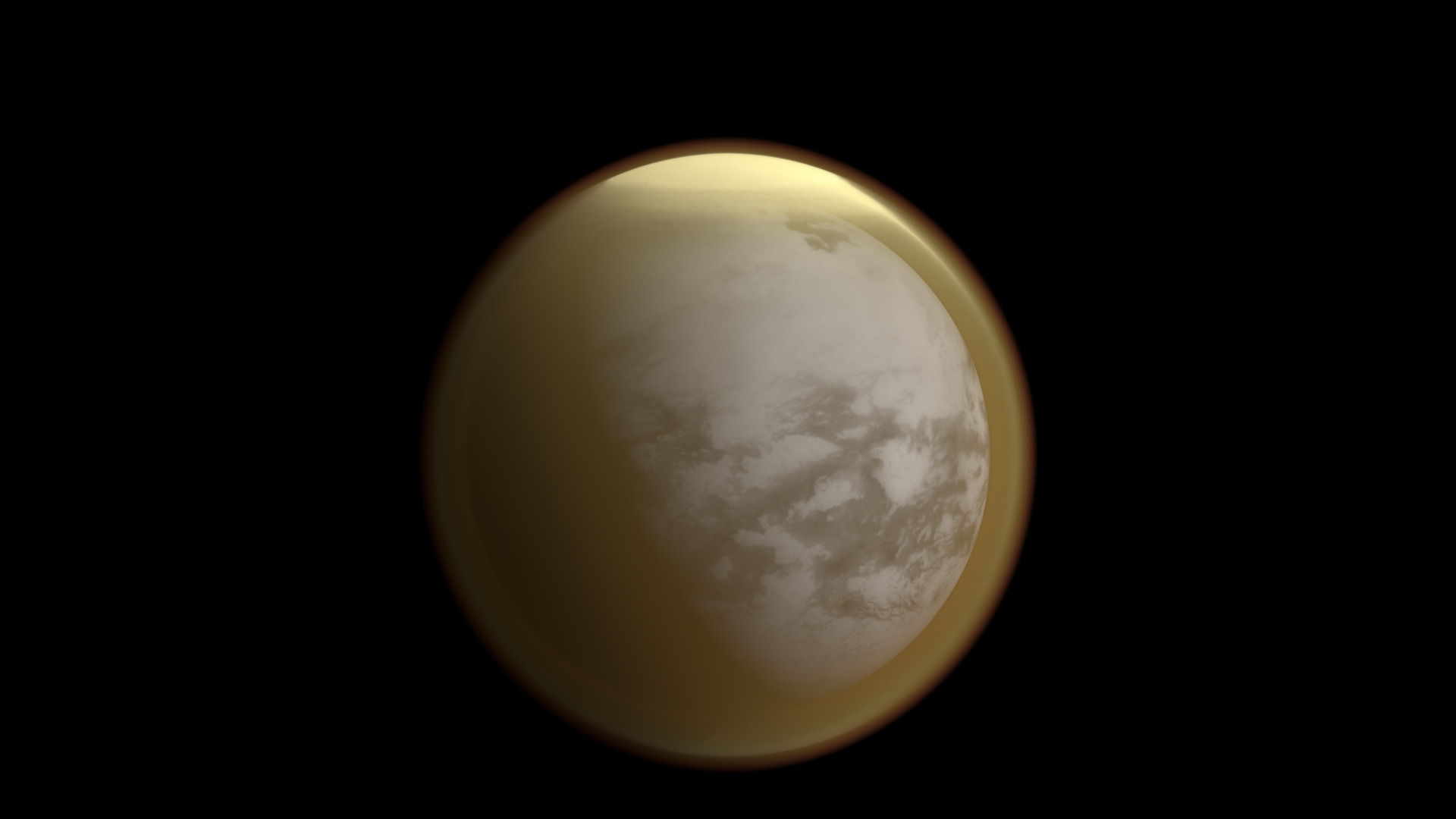Titan science results from James Webb Space Telescope: animation resource page
Push into JWST to Saturn and Titan.
Of all the alien worlds in our solar system, one in particular resembles our home planet. Titan, the largest moon of Saturn, is the only other place we know of where you could walk along the seashore or stand in the rain. However, Titan’s exotic seas and its oily raindrops are not made of water, but of the natural gases methane and ethane super-chilled into liquid form. Now, NASA’s James Webb Space Telescope has revealed a crucial, missing step in how ethane is formed, and its discovery could tell us about the future of Titan’s atmosphere.
Animation of methane evaporating from a lake on Titan.
Animation of a hydrocarbon lake and methane rain clouds on Titan.
Animation of Titan’s potential atmospheric evolution over tens of millions of years.
Animation of evaporated methane molecules being broken apart by radiation in Titan’s upper atmosphere. The resulting methyl radicals are unstable and quickly recombine to form the heavier hydrocarbon ethane. In turn, ethane condenses into droplets and rains out of Titan’s atmosphere – replenishing lakes and seas on its surface. Each evaporated methane molecule loses a hydrogen atom to space during this process, permanently removing the methane from Titan’s climate. If the lost methane is not replenished from the moon’s interior, then Titan’s rivers and lakes, its rain clouds, and even its organic haze could all disappear in the far future.
For More Information
Credits
Please give credit for this item to:
NASA's Goddard Space Flight Center Conceptual Image Lab
-
Animators
- Jenny McElligott (eMITS)
- Jonathan North (eMITS)
- Kim Dongjae (eMITS)
- Walt Feimer (eMITS)
-
Producer
- Dan Gallagher (eMITS)
-
Scientist
- Conor Nixon (NASA/GSFC)
-
Technical support
- Aaron E. Lepsch (ADNET Systems, Inc.)
Release date
This page was originally published on Wednesday, May 14, 2025.
This page was last updated on Thursday, May 15, 2025 at 5:03 PM EDT.

![NASA’s Webb Telescope has discovered a new molecule in Titan’s atmosphere – one that may have implications for the future of this surprisingly Earthlike world.Complete transcript available.Universal Production Music: “Barfuß Durch Die Stadt” by Edgar Möller [GEMA] and Lucia Wilke [GEMA]; “Into the Void” by Gage Boozan [ASCAP]; “Pulse of Progress” by Emma Zarobyan [SOCAN]; “Playing With The Narrative” by Cathleen Flynn [ASCAP] and Micah Barnes [BMI]; “Back From The Brink” by Daniel Gunnar Louis Trachtenberg [PRS]Watch this video on the James Webb Space Telescope YouTube channel.](/vis/a010000/a014800/a014843/Webb_Titan_Climate_Thumbnail.jpg)